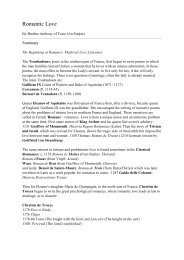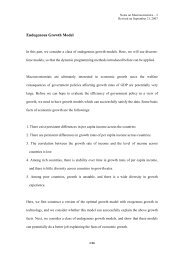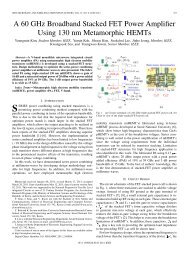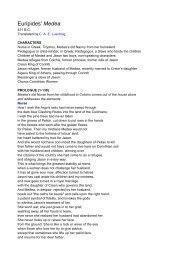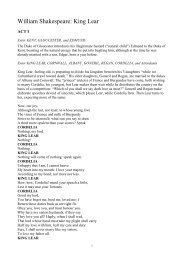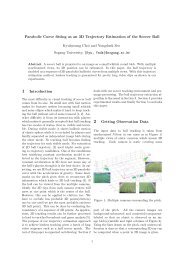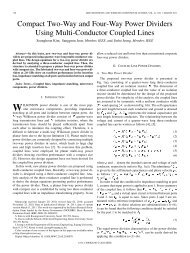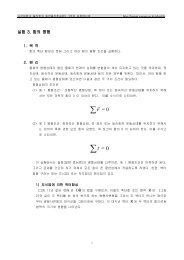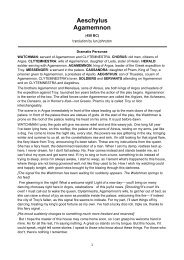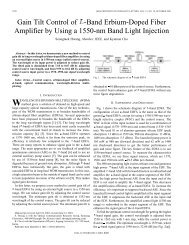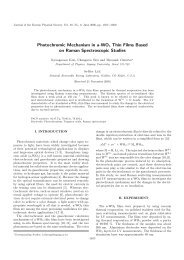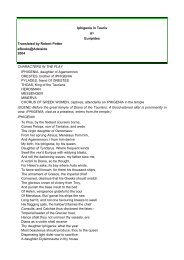THE KOREA REVIEW Volume 1, 1901 Homer B. Hulbert A.M. ...
THE KOREA REVIEW Volume 1, 1901 Homer B. Hulbert A.M. ...
THE KOREA REVIEW Volume 1, 1901 Homer B. Hulbert A.M. ...
Create successful ePaper yourself
Turn your PDF publications into a flip-book with our unique Google optimized e-Paper software.
to Korea and via Korea, to China. The First National Bank has a substantial granite building here for<br />
the transaction of its large banking business and here also are the 18th and 58th National Banks to<br />
Japan. There are now coastwise lines of small steamers running north to the capital of the Whang-ha<br />
Province, via river ports on the Han, lines north to Cheung-nam-p’o and Pyung-yang, and south to<br />
kun-san, and recently a line has been opened by which it is possible to reach Kong-ju the capital of<br />
Ch’ung-ch’ung Do in the south in twenty-four hours from here. This shows the line along which<br />
development is going. The Japanese merchants have a Board of Trade which attends to the mercantile<br />
interests of Japan and a Rice Exchange where large transactions take place. The Japanese merchants<br />
hold a prominent place in the import and export trade of the port and have large vested interests.<br />
Probably the most important enterprise, however, on which the Japanese are engaged in the port, is<br />
the management of the Seoul-Chemulpo Railroad which has its head office and shops here. This<br />
important undertaking is fraught with great promise for Korea. Under the efficient direction of the<br />
General Manager, T. Adachi, Esq., it has become an indispensable factor in the life of the port and our<br />
suburbs at Seoul.<br />
The Chinese Settlement is at the Western end of the port and is under the jurisdiction of<br />
Chinese Consul, C. T. Tong, Esq. Here reside most at the 500 Chinese residents of the port. Chief<br />
among these is the firm of E. D. Steward, with an American name and a thoroughly progressive spirit.<br />
Without him it would be hard for most of us to get along. There are a great many Chinese gardeners<br />
living at the port who have small gardens in the adjacent fields. Most of these are Shantung farmers<br />
who come over in the spring, work their holdings, and return for the winter to their native land, thus<br />
causing a constant fluctuation in the number of Chinese residents at the port.<br />
The general foreign community is constituted very much [page 14] the same as other ports<br />
in the Far East. We have the Customs staff, the Consuls, the merchants and the missionaries. The<br />
Concession is in the eastern end of the port and is well laid out with streets and drains and is under the<br />
jurisdiction of the Consuls of the Treaty Powers and representatives chosen from the land owners.<br />
These together constitute the Council. There is efficient police supervision and all the interests of the<br />
Settlement are well cared for. At the head of the business interests of the port are the three firms of<br />
Townsend and Co., E. Meyer, and Co., and Holme Ringer and Co, E. Meyer and Co. have charge of<br />
the interests of the German Mining Concession which has a large tract of mining territory in the<br />
western part of Korea, the business of which thus comes to Chemulpo. Holme Ringer and Co. are also<br />
agents of the Hong Kong and Shanghai Banking Corporation which has a branch office here. One of<br />
the greatest interests at the port is that of the American Mines. These are located in the northern part<br />
of Korea but the head office is here in charge of the Treasurer of the Company, D. W. Deshler, Esq.<br />
The Eastern Pioneer Company, which has a mining concession in Northern Korea, also maintains an<br />
office here. These immense interests, the American Mines, the German Mines, the English Mines, the<br />
Hong Kong and Shanghai Bank, and the Seoul-Chemulpo Railroad all unite to place Chemulpo at the<br />
head of the business of all Korea.<br />
But this is not all. A most interesting experiment is being inaugurated at Chemulpo at this<br />
time in the way of manufacturing. In previous years the Korean government launched forth on various<br />
manufacturing schemes, such as a glass factory, a match factory, and a paper mill. These were all<br />
located at Seoul and were not successful. The present venture at Chemulpo is in the line of cigarettes<br />
and a large factory has been erected on the foreshore at the eastern end of the town and will soon be in<br />
operation with private capital back of it and every prospect of success.<br />
There are three Missions at work in Chemulpo,—the Roman Catholic with a fine church<br />
and a home for Sisters who work among the women and girls of the port and surrounding country; the<br />
Church of England Mission with a [page 15] hospital and a chapel in which services for the foreigners<br />
and Japanese are held; and the Methodist Episcopal Mission which has its headquarters at the farther<br />
end of the Korean city. Both the Roman Catholic and the Methodist Missions have a large work<br />
among the Koreans in the port and surrounding villages, and, the Church of England Mission is doing<br />
a most successful medical work in the same section.<br />
Turning to the sights of the town we have already alluded to the First National Bank, which<br />
possesses one of the finest buildings in all Korea. Then we have our Town Hall, back of which is the.<br />
jail where we imprison our carts and jiggies, for we seldom have criminals to occupy it, the new<br />
Chemulpo Club House which is architecturally quite striking, the public gardens which of late years




